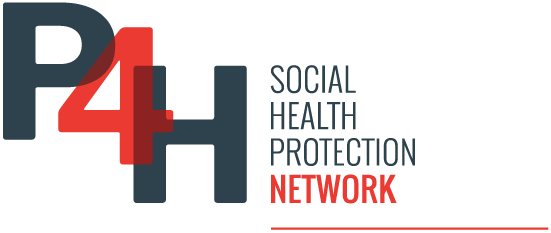A rural China policy waiving copayments for essential medicines in primary care (PC) significantly increased PC visits by 44% and outpatient spending at PC facilities by 40%. At the same time, outpatient hospital visits fell by 26%, though hospital spending and...
Addressing public health and health system challenges in Greece: reform priorities in a changing landscape
Greece’s health system has faced mounting strain from ageing populations, chronic diseases, financial pressures, and shocks like COVID-19 and climate change, which have exposed deep structural weaknesses. Although multiple reforms have aimed to improve funding,...
The effect of performance-based financing interventions on health worker motivation and job satisfaction
Concerns exist that performance-based financing (PBF) may erode intrinsic motivation by emphasizing financial incentives, though it could also enhance morale through improved conditions. Using six national pilot evaluations across Cameroon, Kyrgyz Republic, Nigeria,...
Health drain: the effect of internal migration on regional disparities in healthcare costs
Internal migration in the Netherlands from 1998 to 2018 altered regional healthcare cost disparities by concentrating younger, healthier individuals in prosperous provinces and older, sicker individuals in disadvantaged ones. Using a novel framework that adjusts for...
Access to healthcare services and factors associated with unmet needs among migrants in Phuket Province, Thailand
This study examines healthcare access and the factors contributing to unmet needs among migrants in Phuket Province, Thailand. The findings reveal that unmet needs are primarily linked to undocumented status, financial barriers, and language difficulties. Employment...
Universal health coverage in Lebanon: agenda setting using Kingdon’s model and a proposed legal framework for revenue allocation
This study examines the renewed push for a Universal Health Coverage (UHC) bill in Lebanon, analyzing its emergence on the policy agenda through Kingdon’s framework. Findings show that public pressure, a dedicated parliamentary committee, and political receptiveness...
Universal public health insurance for Afghan refugees in Iran: a contextual analysis
This study explored the contextual factors affecting Iran’s basic universal health insurance program for Afghan refugees using the PESTEL framework. Through interviews with 22 stakeholders, researchers identified 61 factors across six main themes: political, economic,...
Machine learning based classification of catastrophic health expenditures: a cross-sectional study of Korean low-income households
This study examined catastrophic health expenditures (CHEs) among low-income households in South Korea using machine learning methods on 2019 Korea Health Panel data. Results showed a 26.2% incidence of CHE, with AdaBoost performing best in prediction, highlighting...
Strategic analysis of financing communicable diseases in Afghanistan
This study analyzed the financing system for communicable disease (CD) management in Afghanistan through qualitative research using interpretative phenomenological analysis with 49 health system experts. It identified 12 strengths, 16 weaknesses, 9 opportunities, 21...
Administrative perspectives on the implementation and sustainability of state-supported health insurance schemes in Nigeria
This study explored administrative stakeholders’ perspectives on Nigeria’s state-supported health insurance schemes (SSHIS) across six states. While the schemes improved health indices, infrastructure, equity, and financing, they face challenges including low...
Sustainability starts with spending: public financial management lessons from Kenya’s universal health care pilot
This study explored how public financial management (PFM) processes influenced the implementation of Kenya’s 2019 Universal Health Coverage (UHC) pilot in four counties through qualitative interviews and focus group discussions. Findings revealed that while a hybrid...
The Future of Health Financing in Africa: The Role of Health Taxes
Health taxes on products like tobacco, alcohol, and sugary drinks are a highly effective yet underused tool in Africa for reducing disease and premature death, while simultaneously generating domestic revenue. These taxes can help governments save lives, lessen...
Providing financial protection in health for low-income populations: a comparison of health financing designs in East Asia
This study compared health financing schemes for low-income populations across six East Asian societies, analyzing eligibility, coverage, and benefits. Results showed Taiwan, Hong Kong, and South Korea provide stronger financial protection, while mainland China lags...
Less is more: consumers’ preferences for value-based insurance design in Switzerland
This study used a discrete choice experiment in Switzerland to examine consumer preferences for value-based insurance design (VBID). Findings showed a strong status quo bias and resistance to higher cost-sharing or limiting low-value care, with preferences varying by...
Challenging inadequate and fragmented primary health care financing: findings from Bangladesh, Indonesia, Maldives, and Nepal
Strengthening primary health care (PHC) is crucial for universal health coverage in South-East Asia, but sustainable public financing remains a challenge in Bangladesh, Indonesia, Maldives, and Nepal. This study, based on extensive document review and interviews,...
